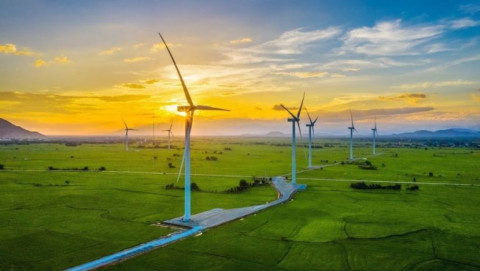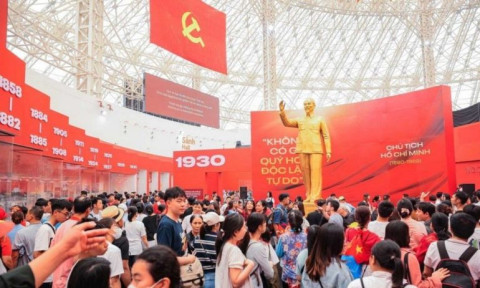“Greener” with carbon credits
- 217
- Socially Responsible Enterprise
- 10:56 05/08/2024
DNHN - Experts from the School of Business, RMIT University Vietnam, emphasized that establishing a mandatory carbon credit trading platform is crucial for the national environmental strategy.

Dr. Pham Nguyen Anh Huy (Senior Lecturer in Finance) and Dr. Samuel Buertey (Acting Deputy Head of Accounting and Law Department)** proposed strategies for managing the emerging carbon credit market in Vietnam and utilizing profits from carbon credit trading to promote environmental sustainability.
The carbon market is a specialized financial market where carbon credits can be bought and sold. A carbon credit is a permit or quota that allows the owner/buyer to emit a certain amount of carbon or other greenhouse gases (typically equivalent to one ton) into the environment. The carbon market includes both mandatory and voluntary types.

Dr. Huy stated that to implement the National Strategy on Green Growth for the period 2021-2030 and commit to net-zero emissions by 2050, Vietnam needs to establish a mandatory carbon credit trading platform.
"A mandatory carbon credit trading platform rewards companies that genuinely strive to reduce emissions by allowing them to sell surplus credits while encouraging non-compliant units to invest more in environmentally friendly equipment and production processes," he said.
Dr. Huy proposed that Vietnam follow the European Union Emissions Trading System (EU ETS) model to manage and regulate carbon credits on the mandatory trading platform.
"EU ETS operates based on the 'cap and trade' principle, where each company has a certain allowable emission limit. If emissions exceed the limit, the company must purchase additional emission allowances on the market, with the price determined by the market. For example, in the initial phase of the EU ETS, most emission allowances were free, but companies were fined 40 euros per ton for non-compliance. Free allowances will gradually reduce in subsequent phases, and companies will eventually have to auction for these allowances," he explained.
Dr. Huy highlighted some key points that the Vietnamese government needs to consider:
The necessary infrastructure for the carbon credit trading platform must implement a measurement, reporting, and verification (MRV) process for emissions at both company and equipment levels. The trading platform must handle a large transaction volume, even though the pilot phase may have lower volumes. The government should consider integrating emerging technologies such as blockchain and AI to reduce costs and enhance transparency and accuracy in the MRV process. These technologies also enable Vietnam to expand and integrate with carbon markets of other countries and regions such as the EU, China, and the United States.
Prices should be determined by the market without government intervention, meaning it must be a free market.
The Vietnamese government should consider appropriate penalties for non-compliant companies and limit fines that could cause businesses to cease operations.
Dr. Huy noted that during the pilot phase, if Vietnam follows the EU ETS model with free carbon credits initially, it could lead to an oversupply of carbon credits due to inaccurate greenhouse gas emission estimates by participating companies.
"Oversupply can significantly reduce trading prices, leading to an inefficient market where carbon credit prices may drop to zero, and companies may not be penalized for excessive emissions because they can buy free carbon credits."
He pointed out that Vietnam faces pressure from countries and regions that have implemented carbon taxes, such as the Carbon Border Adjustment Mechanism (CBAM). The CBAM will negatively impact industries such as steel, cement, fertilizer, and aluminum by taxing carbon imports into the EU in these sectors. However, CBAM will not apply if Vietnam has an ETS that meets EU standards.
"The Vietnamese government needs to use emerging technologies like blockchain and AI to enhance MRV processes and reduce greenhouse gas emission estimation errors during the pilot phase of the carbon credit trading platform. This can also expedite the launch of the carbon credit trading platform and minimize the impact of international carbon taxes on domestic companies," Dr. Huy said.

Dr. Samuel Buertey also proposed a strategy for using the profits from carbon credit sales to enhance environmental sustainability in Vietnam.
"Revenue generated from carbon credit sales can be smartly allocated to different industries to promote environmental conservation and support Vietnam's transition to more environmentally friendly practices," he said.
With vast forest resources, Vietnam can allocate a portion of the profits to continue funding sustainable forest management activities. Enhancing forestry management and oversight institutions while investing in reforestation and afforestation projects will ensure the protection of forests from conversion for agricultural, industrial, and urban purposes.
Additionally, the government can create more incentives for farmers and communities dependent on forest resources, encouraging them to conserve and plant forests. A portion of the carbon credit sales profit can be invested in renewable energy projects to reduce Vietnam's reliance on fossil fuels by 40% and lower greenhouse gas emissions.
Supporting research and development (R&D) of emission reduction technologies or enhancing carbon capture is a worthwhile investment. Although carbon capture, utilization, and storage (CCUS) technology is still in its infancy, especially in developing countries, the government can establish a special fund to support R&D activities in CCUS technology. This investment will foster innovation and provide long-term solutions to environmental challenges.
Dr. Buertey also shared optimal practices from other countries that Vietnam can adopt to improve its carbon credit management strategy.
Vietnam must establish a robust legal framework defining the rules and guidelines for carbon credit trading and enforcement. The EU ETS, known for its exemplary legal framework, can serve as a model for Vietnam. Vietnam can adopt similar stringent regulations to ensure market integrity and compliance. Transparent and strong reporting requirements can be enforced as a strategy to build trust and reduce uncertainty in the carbon credit trading platform. Regularly publishing market data, including emission reports and auction results, will help mitigate market risks.
Although carbon credit prices should be determined by the market, Vietnam can implement rule-based market stabilization strategies to address excessive price volatility and discourage low-carbon investment. The Korean Emissions Trading Scheme (K-ETS) uses a Market Stability Reserve (MSR) to manage the supply of emission allowances, and the state of California in the United States uses price floors and ceilings to stabilize prices. These examples provide useful references for how Vietnam can limit market volatility. Another strategy that Vietnam should consider in the medium to long term is linking with other regional and global carbon markets. Since 2020, the EU has linked its ETS with Switzerland, making the market more flexible and efficient. Vietnam should consider a similar approach to enhance liquidity and provide more trading options for businesses.
"With careful and solid measures, the Vietnamese government can promote the nascent carbon credit market and enhance sustainability," Dr. Huy concluded.
Minh Ngoc (RMIT)
Related news
- Practical applications of carbon credits in the economy. Part XIV: Improving irrigation methods to reduce carbon emissions into the environment
- Banks and challenges in funding green projects
- Practical applications of carbon credits in the economy. Part XIII: Towards the goal of building low-carbon cities in Vietnam
#environmental protection
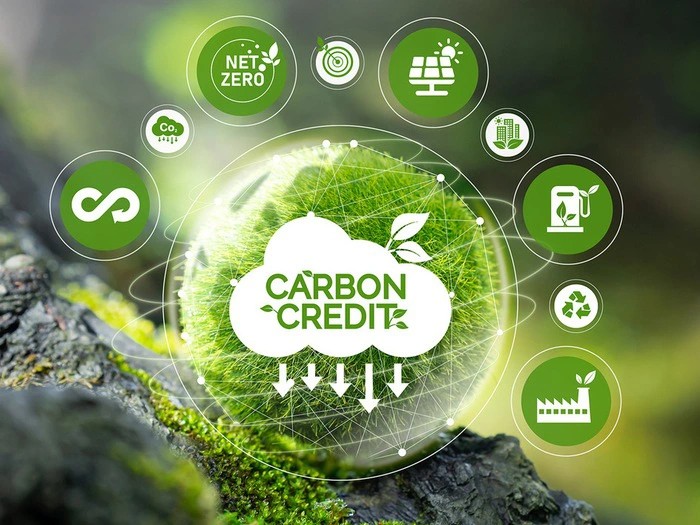
Reducing greenhouse gas emissions and carbon market development to fulfill COP 26 commitments
Vietnam aims to reduce greenhouse gas (GHG) emissions and develop a carbon market, aligning with its COP 26 commitments. This requires close coordination and comprehensive solutions from all sectors and communities.

What can be learned from VinFast's success after becoming the best-selling car brand in Vietnam?
VinFast's market-leading sales in Vietnam in September marked a major turning point, as a domestic electric vehicle brand outpaced international competitors.
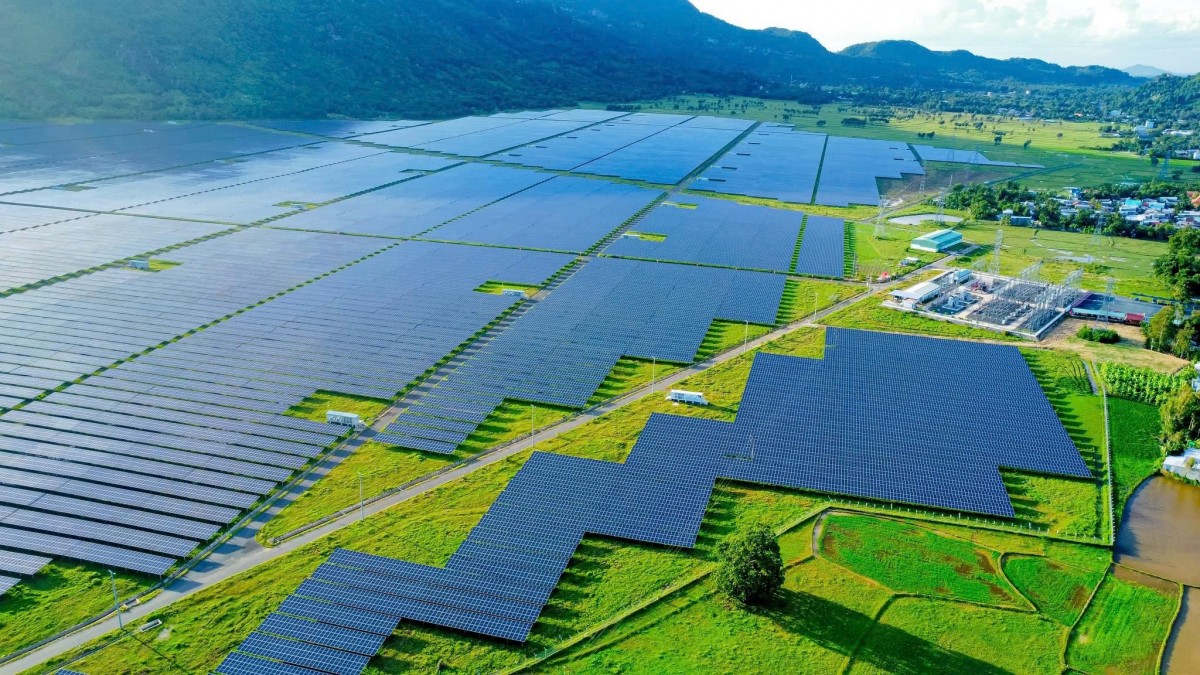
Nurturing life for the future with clean energy
Vietnam has just endured Typhoon No. 3, leaving behind a trail of destruction and loss that makes us all feel small against Mother Nature. It is time for a change, time to nurture and protect our living environment.

Practical applications of carbon credits in the economy. Part XXI:Carboncor Asphalt - An effective solution for Vietnam to achieve net zero emissions
Vietnam is actively implementing green construction solutions to achieve the goal of net zero emissions by 2050. These solutions reduce greenhouse gas emissions and support sustainable development in the construction industry.
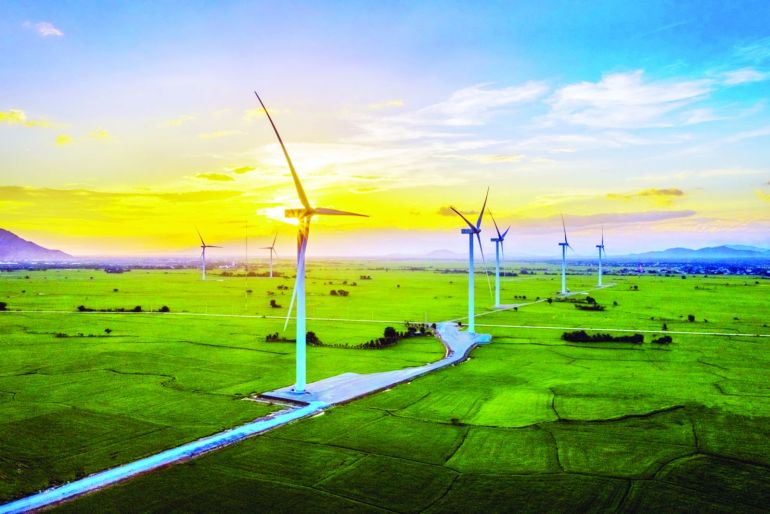
Practical applications of carbon credits in the economy. Part XI: Bridging policy and strategy for the carbon credit market
To develop the carbon credit market, the Government and businesses must improve cooperation and communication. The Government needs to provide clear policies, while businesses must adopt emission reduction strategies and leverage carbon credits.

Yen Bai: Implementing the plan to manage and eliminate ozone-depleting substances and greenhouse gases
The People's Committee of Yen Bai province has just issued document No. 3005/UBND-TNMT on the implementation of the National Plan for the management and elimination of ozone-depleting substances and controlled greenhouse gases.
Đọc thêm Socially Responsible Enterprise
When artists do business – livelihood is no poetry!
A series of indictments, arrests, and bankruptcies among artists has sounded a serious alarm.
Hanoi’s economy grows 7.92% in first nine months of 2025, FDI surges nearly threefold
Hanoi maintained robust growth momentum in the first nine months of 2025 with GRDP up 7.92% year-on-year, driven by strong services and construction sectors.
Vietnam’s strong gdp growth fails to ease labor market distress
As the year draws to a close, the pressing challenge for businesses and policymakers is how to rebuild worker morale, retain top talent, and stabilize employment amid lingering uncertainty.
Vietnam ramps up efforts to lift EU “Yellow Card” on Illegal fishing
Prime Minister Pham Minh Chinh has called for intensified and coordinated efforts to have the European Commission’s “yellow card” on Vietnam’s fisheries removed within this year.
Quang Tri calls for investment in wind power plant project worth over VND 1,100 billion
The People’s Committee of Quang Tri Province has officially announced the Hưng Bắc Wind Power Plant Project as part of its investment invitation portfolio.
Hanoi receives two million visitors during the four-day National Day holidays
From August 30 to September 2, Hanoi received around 2.08 million visitors during the four-day National Day holidays , three times higher than the figure in the same period last year, the municipal Department of Tourism reported.
Ca Mau gradually makes its mark on the national tourism map
By 2025, Ca Mau aims to attract 8.4 million visitors and achieve a total revenue exceeding 8,585 billion VND, contributing to the province's double-digit growth target.
UNDP Resident Representative hails Vietnam as an emerging economic powerhouse
Millions of people have been lifted out of poverty, hunger has been eliminated, and the economy has maintained consistent growth rates of over 6 per cent, UNDP Resident Representative in Vietnam Ramla Khalidi remarks.
Alpha Books Chairman Nguyen Canh Binh: The survival weapons of Vietnamese entrepreneurs in the age of AI.
Alpha Books Chairman Nguyen Canh Binh shares three essential lessons to ensure the survival and growth of Vietnamese entrepreneurs in the digital age: creativity, connection, and collective intelligence.
Mr. Le Viet Thang, CEO of 1Office: "Don’t use old solutions for new ai challenges"
As artificial intelligence (AI) reshapes the global technology landscape, Vietnam is taking decisive steps to establish a National AI Research and Development Center, alongside the National Data Center.






